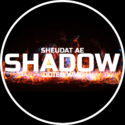SHADOW
Sheudat ae Doien Wyt SHADOW | |
|---|---|
|
The SHADOW logo as it appeared in a 2017 cyberattack on television networks | |
| Type | Terrorist organization, criminal syndicate, government agencies, cabal |
| Membership |
|
The Shadow Syndicate, or as it's known commonly displayed as SHADOW, which is an acronym for Sheudat ae Doien Wyt (Nyaliesh for Executive for Counter-intelligence, Terrorism, and Extortion), is an international terrorist and crime syndicate that operates covertly across the world, with the organization's goal being to profit off extortion and terrorist activities, weaken governments in the Coalition of Crown Albatross by carrying out cyberattacks and planting covert operatives inside government agencies, and sowing dissent in fragile nations. The group's dealings and operations are largely unknown to the public, but they have been linked to incidents such as the attempted assassination of Walde Herzog of Drambenburg, the 2020-21 tensions in the Tarijar Strait and the subsequent attempted coup d'état in Qolaysia, and the murder of nuclear physicist Ethan Hyderland.
What little is publicly known about the group is that they are not aligned to any particular nation or political ideology. SHADOW and corresponding organizations have often been alleged to conspire to control world affairs, by masterminding events and planting agents in government and corporations, in order to gain political power and influence. Central to some of the more widely known and elaborate conspiracy theories, SHADOW have been depicted as lurking in the shadows and pulling the strings and levers of power in dozens of novels, films, television shows, and music forms of media. However, the group is believed by intelligence agencies to be more interested in personal profit through manipulation of global markets and businesses.
Ideology and leadership
It is believed by most international intelligence agencies that SHADOW's main strategy is to instigate conflict between powerful geopolitical enemies, namely the superpowers, hoping that they would exhaust themselves and be vulnerable to direct influence from the syndicate's operations. Much of this instigation is believed to be triggered through low-level funding of terrorist groups and blackmail of prominent politicians by wealthy individuals who are secretly members of the organization.
Organizational discipline within SHADOW is notoriously draconian with the penalty for disobedience or failure being death. According to an anonymous member of the organization who defected and testified to closed Congressional Hall hearings, the group follows strict codes of loyalty and silence. The members of the headboard of SHADOW are known by numbers (e.g.: Number 1) as codenames. The numbers of members were initially assigned at random and then rotated by two digits every month to prevent detection. For example, if one was Number 1 this month, he would be Number 3 next month. By deliberately drawing attention away from the true leader of the organization, leaders are protected by masquerading as a target of lower importance, and the structure of the organisation was also obscured from intelligence services.
Only two figures have ever been identified as being members of SHADOW;
- Quentin Lievremont is a Shoassauan man believed to be a senior member of SHADOW's headboard. He was identified in the anonymous Congressional hearings, and was nearly arrested by ZIS agents in Janapa, but his private plane was allowed to take off due to clearance given under suspicious circumstances. Though his passport identifies him as Quentin Lievremont, it is believed that this is a cover-name, he may not be Shoassauan, and he likely uses multiple identities.
- Denilbek Kuriyev is an Ossotian businessman who was detained by the Drambenburgian intelligence agency and admitted to his membership and offered information about the group in exchange for safety. According to Drambenburgian officials, he remains in protective custody.

